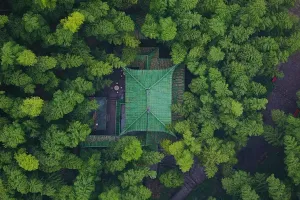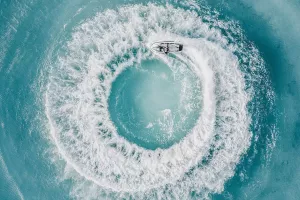Mysterious Desert
A desert is a mysterious place. Because there are always sandstorms in the desert, most people always have a bad impression of the desert, and humans have been working hard to control the continuous expansion of the desert.
Indeed, the impact of desertification on the earth's environment is not very good. But it is undeniable that some landscapes in the desert are worth visiting, especially in the desert areas.
There are also some scenes that can be seen in the desert, which is completely different from the city, the sea, and the forest.
Taklamakan Desert
The Taklamakan Desert is located in the center of the Tarim Basin in Xinjiang, China, and is China's largest desert. The Taklama Gan Desert is the world's largest desert and the world's second-largest flow desert. The type of sand dunes is complicated and diverse. There are composite sand mountains and sand ridges, and the whole is honeycomb-shaped.
Sahara Desert
The Sahara Desert runs through the northern part of the African continent, with a length of 5,600 kilometers, a width of about 1,600 kilometers, and a total area of about 9,065,000 square kilometers, accounting for about 32%of Africa's total area.
The Sahara Desert is the largest dry desert in the world. It extends from the Atlantic Ocean in the west to the Red Sea in the east and extends from the Mediterranean in the north to Sahler in the south.
The Sahara Desert is called the ocean without water by the Arab people.
Victoria Desert
The Victoria Desert's nearly 350,000 square kilometers of desert belong to South Australia and Western Australia. There are countless sand dunes in the desert, as well as grasslands and salt lakes.
A special feature of the Victoria Desert is the crescent dunes, which are mainly composed of clay. There are also some Aboriginal settlements in the Great Victoria Desert.
Blue Lake Desert
In Brazil, there is the most beautiful blue lake desert in the world. As we all know, Brazil has the world's largest tropical rainforest, and nearly 30 % of the world's freshwater resources are reserved here. Why is there a desert?
The desert covers an area of 300 square kilometers and is located in the Malahsez National Park in northern Brazil. The park is covered with snowy dunes and dark blue lakes.
It is different from other deserts in its rainfall. The annual rainfall here can reach 1600 mm, or even 300 times the Sahara Desert. But in the arid season, the lake water will evaporate completely, exposing a large desert deployed at the bottom of the lake.
Australian Desert
The Australian desert is the largest desert in Australia with an area of 1.55 million square kilometers, accounting for more than 1/5 of Australia's land area. The precipitation here is very scarce, and the climate is extremely dry. The maximum temperature in summer can reach 50 ° C.
Antarctica
Antarctica has 13.2 million square kilometers, which is the largest cold desert in the world. The climate here is severe, and the temperature rises sharply.
In addition, the active volcano and the impressive ice and snow landscape make Antarctica one of the most adventurous regions in the world.
From the current point of view, the global desert area has continued to expand. Therefore, protecting the environment and maintaining ecological balance is a major issue in front of all human beings.


